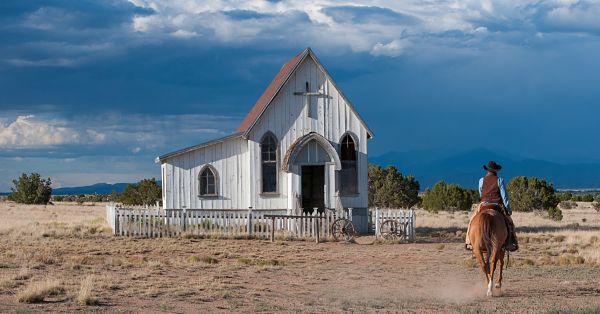 Can we look at where a local church spends money and judge what that congregation is doing to help people?
Can we look at where a local church spends money and judge what that congregation is doing to help people?
Recently, a thoughtful person I follow on social media made the argument that in large churches, most spending is on salaries, buildings, and ministry programs for the members.
He argued that this showed that any belief that church would (or does) step in to help social problems was wrong.* The best way to know what a church values is to follow the money: look at the balance sheets.
Who could argue with that?
As a pastor’s kid, a church member in his second decade of parish council membership, I can. The budget does not reflect most of the external outreach of a local church: the pastor’s time does.
Much help is given through the pastoral staff of a local church (paid by the local church) without the further expenditure of church money.
Find out how the pastoral staff spends their time and you will get a better measure of the help the church is giving. The local church invests in the pastoral staff and the pastoral staff invests time and talent in the congregation and community.
First, let’s clear up a myth: most evangelicals do not go to big churches so big churches are not going to tell much of the Evangelical story. Only sixteen percent of practicing Christians go to a church with more than five hundred members. Mega-ministries may do all kinds of things, but they are not the norm for the overwhelming majority of American Christians.
Second, many churches are very small (under one hundred) like some of those pastored by my Uncle Charlie (Southern Baptist) where he and my Aunt Jeanne were the only paid employees with his pay supplemented by his Air Force pension. The budget of hundreds of these churches is pastoral salary, building, and tiny amounts for supplies. By a budget measure, such churches do little or nothing externally, but this is false.
They provide an often highly qualified worker for the community who performs tasks for members and non-members in the community.
Reminder: the small church is the normal church.
The average Evangelical church appears to have one employee for every seventy-three people. Almost half of us go to a church with one or two employees, but great things happen there.
How?
Let me give examples from my childhood (Dad!) and churches I have attended that were average size (under 500), but where I knew what was happening. I have generalized the examples to avoid naming specific people or having one person in mind in any of the cases. The pastors are specific, but the people helped are general cases based on specific examples.
The amount of care I have seen outsiders get from local churches is outstanding, but it never or rarely showed up in the budget.
Dad, as a full time minister, came into contact with people having many needs. Drug addicts would come to our church. People with legal problems attended. We had refugees come. Growing up we often had folk needing help live in our house and others would frequently eat with us. Dad would arrange jobs or support from other members of our congregation. People with serious needs (like drug issues) would get help getting to a drug rehab center (like Teen Challenge) and get the kind of follow up visits that can make such a program more effective.
See the difference between pastor-to-people aid and budgeted programs?
Small churches may not give out money for groceries, instead having families provide the food. Sometimes these meals were in our kitchen.
The budget impact was dad’s paycheck.
When a pastor helps rebuild a kitchen with local volunteers, there is only a small amount of money spent, but large amounts of personhours. All the local churches I have known had some emergency funds to distribute, but bigger needs were (and are) met from leveraging pastoral time and his contacts in the community.
A church of a few hundred is not helping hundreds, but they are helping those who connect with them. Count the hospital visits or the trips the pastors I have known take to prisons. What of the help arranged with the institution while there using years of contact with those bigger institutions?
The too simple picture that help is all about money forgets this possibility.
The working pastor and volunteers who comb the community to help the new family from “over there” don’t have a big budget, but the family becomes part of the community. What is the value of such work? This is difficult to know.
When a small congregation welcomes a refugee family, helps them find jobs, housing, and slips in a bit of cash, the help is hard to quantify. If a big ministry or government group cuts a check, that is easy to measure even if it is not as effective.
As a boy, Mom and Dad personally helped people that just wandered into our church. They did this for decades. So have pastors I have watched in other small churches: one had a minuscule budget, but our sainted priest with the Oxford doctorate helped many in Southern California connect with the American experience. Here is a man with letters from the Archbishop of Canterbury in his files helping recent immigrants get an excellent education.
Most ministry in American churches is invisible to the budget, because it is altruistic ministers working long hours to help anyone who comes.
If we ever lose the work done by thousands of such clergy and staff, then we will need massive spending to replace them. Dad and the pastors I have known would help outsiders, congregants, anyone because they were driven by the love of God. People will do for love what would cost thousands to get someone to do for money.
If a church member has seen this countless times, and compared it to the government approach, little wonder he might prefer the small and local to the faceless. Of course, the tendency is to think that the local approach can do more than it can. . . Some realism is needed.
Still, measuring the community impact by budget dollars labeled “community impact” is foolish.
God save us from merely measuring impact by dollars.
————————
*He used stronger language. I am not naming the person here, since I wish to deal with the general metric he is proposing and not the specific example of a social problem a majority of Evangelicals think the local church could solve.
I do not think the local church can be a universal answer to all social problems. There is a role for local, state, and federal governments as well as parachurch ministries.












